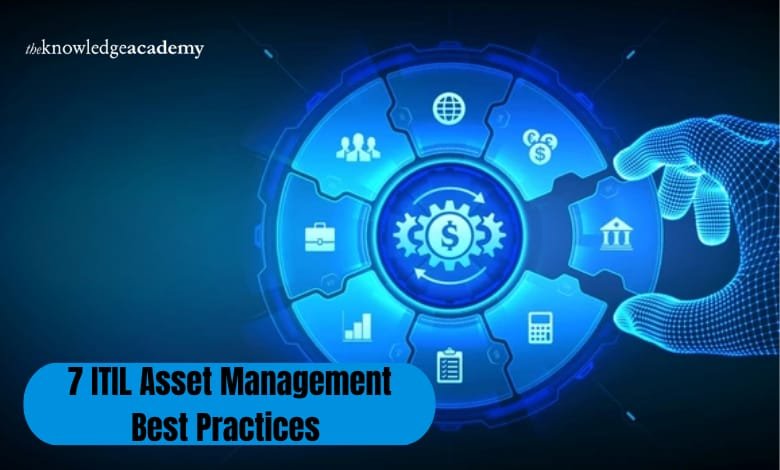7 ITIL Asset Management Best Practices

Managing IT assets might sound straightforward, but without the right structure, it quickly becomes messy and costly. That’s where the ITIL 4 Foundation framework makes a difference. It helps businesses take control of their hardware, software, and digital tools efficiently. If you’re wondering What is ITIL Asset Management, it is the process of tracking and optimising these assets throughout their lifecycle.
Let’s look at how you can apply best practices to get real value from your IT resources.
1. Keep an Accurate Asset Inventory
What you don’t realise you have, you can’t control. Creating and keeping an exhaustive inventory of all IT assets is the first step in an efficient ITIL asset management process. This includes software licenses, cloud services, mobile devices, and virtual machines, as well as hardware such as desktops, laptops, and printers. The goal is to establish a single source of truth. Keep track of all updates and changes in real-time by using configuration management databases or asset monitoring solutions. Better financial planning is supported, duplication is reduced, and an accurate and up-to-date inventory identifies underutilised assets.
2. Define Ownership and Responsibility
There must be a defined owner for each asset. Issues are frequently overlooked or resolved too late when ownership is unclear. Assigning responsibilities ensures that every asset is properly maintained throughout its lifespan. This promotes responsibility, helps prevent upgrade delays, and ensures a quicker response to problems. For example, the asset owner can promptly follow up if a laptop is misplaced. This method facilitates reporting and compliance while also increasing clarity.
See also: Protect Your Home with the Latest Alarm Installation and Security Technology
3. Use Lifecycle Thinking for Every Asset
Every asset has a journey. Every phase is important, including planning, acquisition, deployment, use, maintenance, and retirement. By considering the full asset lifecycle, waste may be minimised, and unforeseen expenses can be avoided. Monitoring software license renewals, for instance, can help avoid service interruptions. Planning the retirement of outdated equipment also reduces the risk of malfunctions or security breaches. An organised perspective that guarantees assets are used effectively and disposed of appropriately is supported by ITIL Asset Management.
4. Make Data Your Best Friend
When it comes to asset management, data is one of your most valuable assets. Making better judgments is aided by monitoring asset performance, consumption patterns, and failure rates. You may find that some brands require more expensive repairs or that certain devices are not being utilised as frequently as they should be. This enables you to plan more intelligent purchases and standardise superior tools. You may also forecast when assets will require repair or replacement by obtaining insightful data. Data validates future investments and aids in cost-benefit analysis.
5. Set Clear Asset Policies and Stick to Them
Asset management rapidly devolves into chaos in the absence of clear policies. Teams may continue to utilise obsolete hardware or purchase software without authorisation. An effective policy describes the process for requesting, approving, issuing, monitoring, and eventually retiring assets. It also outlines what to do if an employee departs the company. Unambiguous regulations stop software abuse, security flaws, and excessive spending. Everyone is guaranteed to understand and adhere to these principles through regular training and clear communication.
6. Connect Asset Management to Other ITIL Practices
No IT process operates in a vacuum, according to the ITIL 4 Foundation. When asset management is integrated with other procedures, such as incident management, change control, and service requests, it performs more effectively. Asset data, when integrated, may help plan upgrades, expedite troubleshooting, and guarantee compliance during changes. For example, the support team can view the complete asset history and make quicker judgements when a user records a case.
7. Review and Improve Regularly
Managing IT assets is a continuous process. To ensure accuracy, procedures and instruments must be regularly examined. Conduct internal audits, get input from the team, and monitor important performance metrics. This makes it easier to identify gaps, such as unused licenses, obsolete tools, or missing assets. ITIL promotes a continuous improvement mindset. Efficiency gains can come from even small adjustments, such as generating reminders for renewals. This continuous evaluation improves the value of your company and fortifies your IT infrastructure over time.
Conclusion
IT asset management is more than keeping a list. When done well, it saves money, reduces risk, and improves service. These simplest practices, guided by the ITIL 4 Foundation, help you take control of your IT environment. If you’re ready to explore ITIL Asset Management in more depth, a course from The Knowledge Academy can guide your next step. It’s all about working smarter with what you already have.
